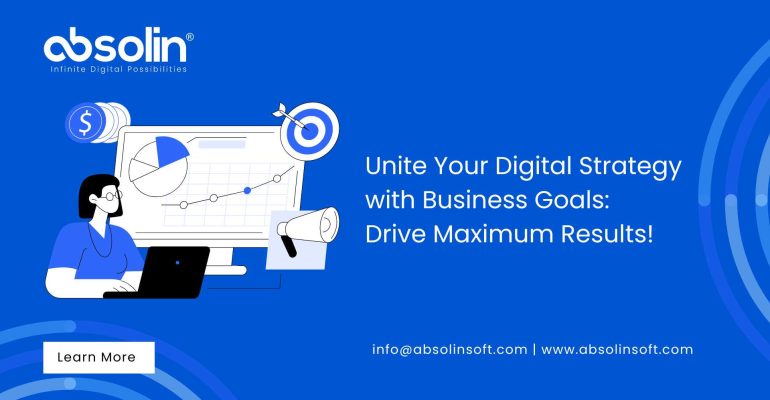How to Align Your Digital Strategy with Business Goals for Maximum Impact

How to Align Your Digital Strategy with Business Goals for Maximum Impact
In today’s digital age, aligning your digital strategy with your business goals is essential for achieving maximum impact. A well-aligned strategy not only helps streamline operations but also ensures that your digital initiatives contribute directly to the overall success of your business. Here’s how to effectively align your digital strategy with your business goals.
1. Understand Your Business Goals
The first step in aligning your digital strategy with business goals is to clearly understand what those goals are. Business goals can range from increasing revenue and expanding market share to improving customer satisfaction and optimizing operations. Ensure that these goals are specific, measurable, achievable, relevant, and time-bound (SMART).
Action Steps:
- Identify Key Objectives: Determine the primary objectives that your business aims to achieve in the short, medium, and long term.
- Prioritize Goals: Rank your goals based on their importance to your business’s success.
2. Conduct a Digital Audit
Before developing or realigning your digital strategy, it’s important to conduct a thorough audit of your current digital assets, including your website, social media channels, and digital marketing efforts. This audit will help you identify strengths, weaknesses, and opportunities for improvement.
Action Steps:
- Evaluate Current Tools and Platforms: Assess the effectiveness of your existing digital tools and platforms in achieving your business goals.
- Analyze Competitor Strategies: Understand how your competitors are using digital strategies to achieve similar goals.
3. Define Your Digital Strategy Objectives
Once you have a clear understanding of your business goals and current digital landscape, you can define specific objectives for your digital strategy. These objectives should directly support your business goals and be measurable to track progress.
Action Steps:
- Set Digital KPIs: Establish key performance indicators (KPIs) that align with your business goals. For example, if your goal is to increase revenue, a relevant KPI could be the conversion rate of your online sales funnel.
- Align with Customer Needs: Ensure that your digital objectives align with the needs and behaviors of your target audience.
4. Develop a Strategic Roadmap
A strategic roadmap outlines the steps you need to take to achieve your digital objectives. This roadmap should include timelines, resource allocation, and milestones to keep your digital initiatives on track.
Action Steps:
- Prioritize Digital Initiatives: Determine which digital initiatives will have the greatest impact on achieving your business goals and prioritize them accordingly.
- Allocate Resources: Assign the necessary resources, including budget, personnel, and technology, to each initiative.
5. Implement and Integrate Your Strategy
Once your roadmap is in place, it’s time to implement your digital strategy. This phase involves executing your planned initiatives and integrating them into your existing business operations.
Action Steps:
- Leverage Technology: Utilize the right digital tools and technologies to support your strategy, whether it’s marketing automation software, data analytics platforms, or customer relationship management (CRM) systems.
- Ensure Cross-Departmental Collaboration: Aligning your digital strategy with business goals requires collaboration across all departments, including marketing, sales, IT, and customer service.
6. Monitor, Measure, and Adjust
The digital landscape is constantly evolving, so it’s crucial to continuously monitor the performance of your digital strategy and make adjustments as needed. Regularly reviewing your progress will help ensure that your strategy remains aligned with your business goals.
Action Steps:
- Track Performance: Use your defined KPIs to measure the success of your digital initiatives.
- Adapt to Changes: Be prepared to pivot your strategy in response to new market trends, customer behaviors, or technological advancements.
7. Communicate and Reinforce Alignment
It’s important to communicate the alignment of your digital strategy with business goals across your organization. Ensuring that all team members understand how their work contributes to the overall business objectives can boost motivation and coherence.
Action Steps:
- Regular Updates: Provide regular updates to your team on the progress of digital initiatives and their impact on business goals.
- Training and Development: Offer training programs to help employees understand and leverage digital tools that align with business objectives.
Conclusion
Aligning your digital strategy with your business goals is a continuous process that requires careful planning, execution, and adjustment. By understanding your business goals, conducting a digital audit, defining clear objectives, and implementing a strategic roadmap, you can ensure that your digital efforts drive meaningful results. Regular monitoring and adaptation will keep your strategy relevant and impactful, ultimately leading to the successful achievement of your business objectives.


